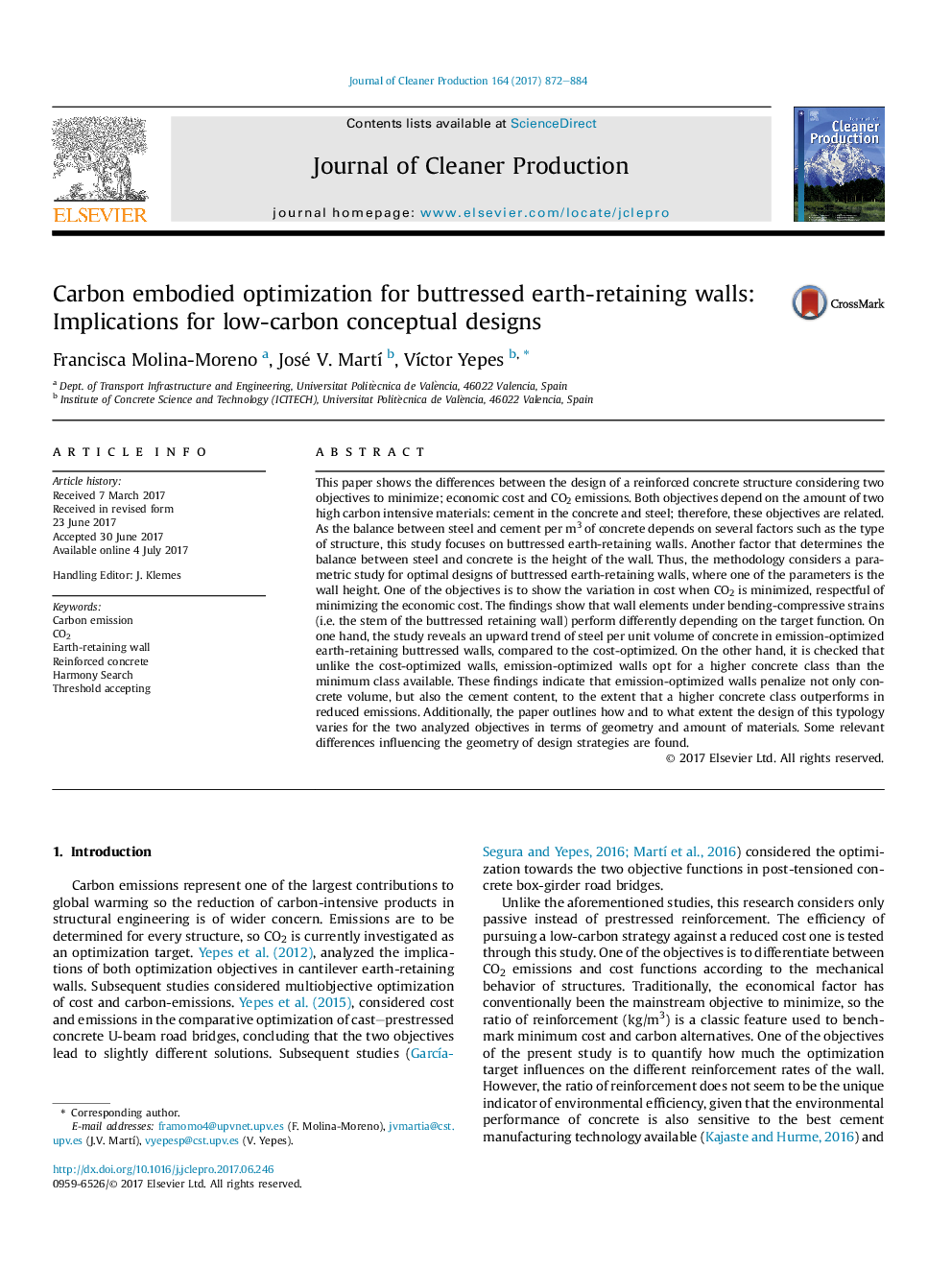| کد مقاله | کد نشریه | سال انتشار | مقاله انگلیسی | نسخه تمام متن |
|---|---|---|---|---|
| 5480497 | 1522090 | 2017 | 13 صفحه PDF | دانلود رایگان |
- Cost premium of reducing CO2-eq emissions is affordable in earth-retaining walls.
- Optimizing emissions implies less use of concrete and greater steel amount.
- Concrete class C30/37 would reduce total emissions by 11Â kg CO2-eq/m3 on average.
- Minimal carbon solutions prioritize several design variables than cost optimization.
This paper shows the differences between the design of a reinforced concrete structure considering two objectives to minimize; economic cost and CO2 emissions. Both objectives depend on the amount of two high carbon intensive materials: cement in the concrete and steel; therefore, these objectives are related. As the balance between steel and cement per m3 of concrete depends on several factors such as the type of structure, this study focuses on buttressed earth-retaining walls. Another factor that determines the balance between steel and concrete is the height of the wall. Thus, the methodology considers a parametric study for optimal designs of buttressed earth-retaining walls, where one of the parameters is the wall height. One of the objectives is to show the variation in cost when CO2 is minimized, respectful of minimizing the economic cost. The findings show that wall elements under bending-compressive strains (i.e. the stem of the buttressed retaining wall) perform differently depending on the target function. On one hand, the study reveals an upward trend of steel per unit volume of concrete in emission-optimized earth-retaining buttressed walls, compared to the cost-optimized. On the other hand, it is checked that unlike the cost-optimized walls, emission-optimized walls opt for a higher concrete class than the minimum class available. These findings indicate that emission-optimized walls penalize not only concrete volume, but also the cement content, to the extent that a higher concrete class outperforms in reduced emissions. Additionally, the paper outlines how and to what extent the design of this typology varies for the two analyzed objectives in terms of geometry and amount of materials. Some relevant differences influencing the geometry of design strategies are found.
Journal: Journal of Cleaner Production - Volume 164, 15 October 2017, Pages 872-884
